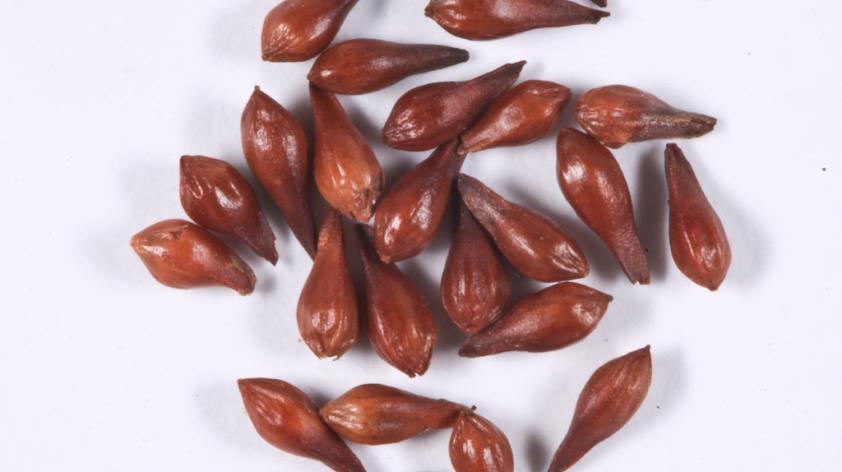
Freezing San Diego’s Rarest Seeds
As we get into fall and winter, most of our local plants have finished their reproductive cycles for the year. With seed collecting at a minimum during this time of year, my time is spent processing the seed collections that were made in past months and performing germination tests. An ideal “seed collection” contains at least 2,500 seeds collected on a single date from at least 50 mother plants in a population. For the rarest species we collect, these ideals might not be attainable, and we might be lucky to collect 100 seeds.
“Processing” can refer to any number of techniques that we use to separate seeds from all other plant material, dirt, and other contaminates. The seed is often passed through differing sizes of sieves, removing both larger and smaller debris, and it is usually further separated using an air winnower. Winnowing is a process in which we pass an increasing amount of air past the seed, until debris is blown off leaving just the heavier, viable seeds behind. Other processes often used include rubbing the seed on a rubber mat to remove small hairs, and use of a food mill or blender for fleshy, moist fruits. This is all done in an effort to get seed collections completely clean, thus minimizing both the physical space that the collection will use when frozen, and the likelihood that the collection develops mold or fungus.
Before seed collections are fully dried and frozen, we perform a germination test. This test produces baseline data, showing us how fresh, unfrozen seed germinates in ideal conditions. Using this baseline data, we can ask any number of questions. We might run further germination tests looking for germination cues or ways to break dormancy. These might include soaking the seed in smoke-water or hot water to simulate fire, and then comparing the germination percentage to the baseline data. More often, the baseline data is used to compare germination percentage and rate over time.
Comparing the germination percentage of fresh unfrozen seed to the percent germination of the seeds from the same collection that have been frozen for years, can tell us how long the seeds will remain alive in the freezer. For example, if germination percentage decreases at a rate of 10% every 5 years of being frozen we might extrapolate how long the seed will remain viable in its frozen state.
Research is showing that seeds of different species have different tolerance to freezing and different longevity when frozen. Some species’ seeds, like oaks, cannot be frozen at all, and must be conserved using different methods (i.e. cryopreservation). Others might only remain viable in the freezer for a short while (several years), and some may remain viable for many years. It is believed that some seeds are viable for hundreds or even thousands of years when frozen.
Herein lies a crux of seed banking science. Data collection and interpretation must continue long after the careers of individuals making the seed collections. While we know that seed banking is a great way to conserve many of our declining plant populations, a seed collection loses much of its conservation value if it will not sprout and grow into new individuals. While the DNA of unviable frozen seed can still have scientific value, the ability repopulate is the goal.
Collections must be tested on a regular basis to ensure viability into the future, and to decide how best to utilize the collection. It requires a true commitment, both in the present and future. San Diego Zoo Global has dedicated itself to ending extinction of plant and animal species worldwide. It is this resolve that allows us to dedicate our time and effort to freezing these rare seed collections, with knowledge that the organization will be here, saving species, for many decades to come.
To read about some of the rare plant species we collected this year, and more about our seed banking efforts, click the following links:
http://institute.sandiegozoo.org/science-blog/saving-san-diego%E2%80%99s-rare-mints
http://institute.sandiegozoo.org/science-blog/rare-plant-seed-collections-san-diego-county
http://institute.sandiegozoo.org/science-blog/conserving-rare-plants-otay-mountain
http://institute.sandiegozoo.org/science-blog/california-plant-rescue
http://zoonooz.sandiegozoo.org/2016/01/29/saving-san-diegos-rarest-plant-species/













